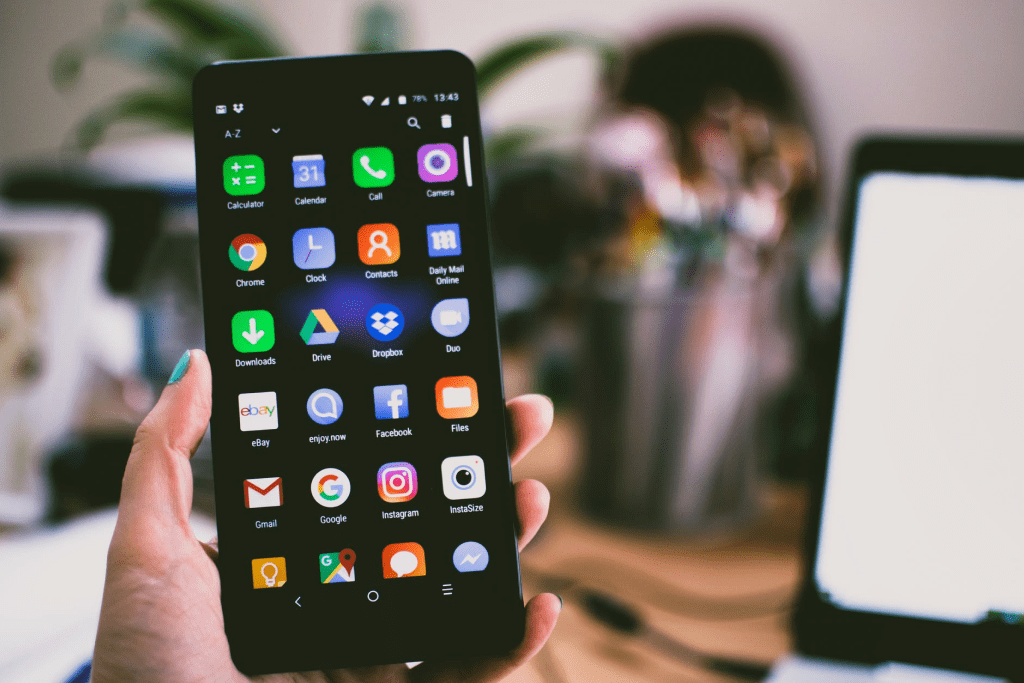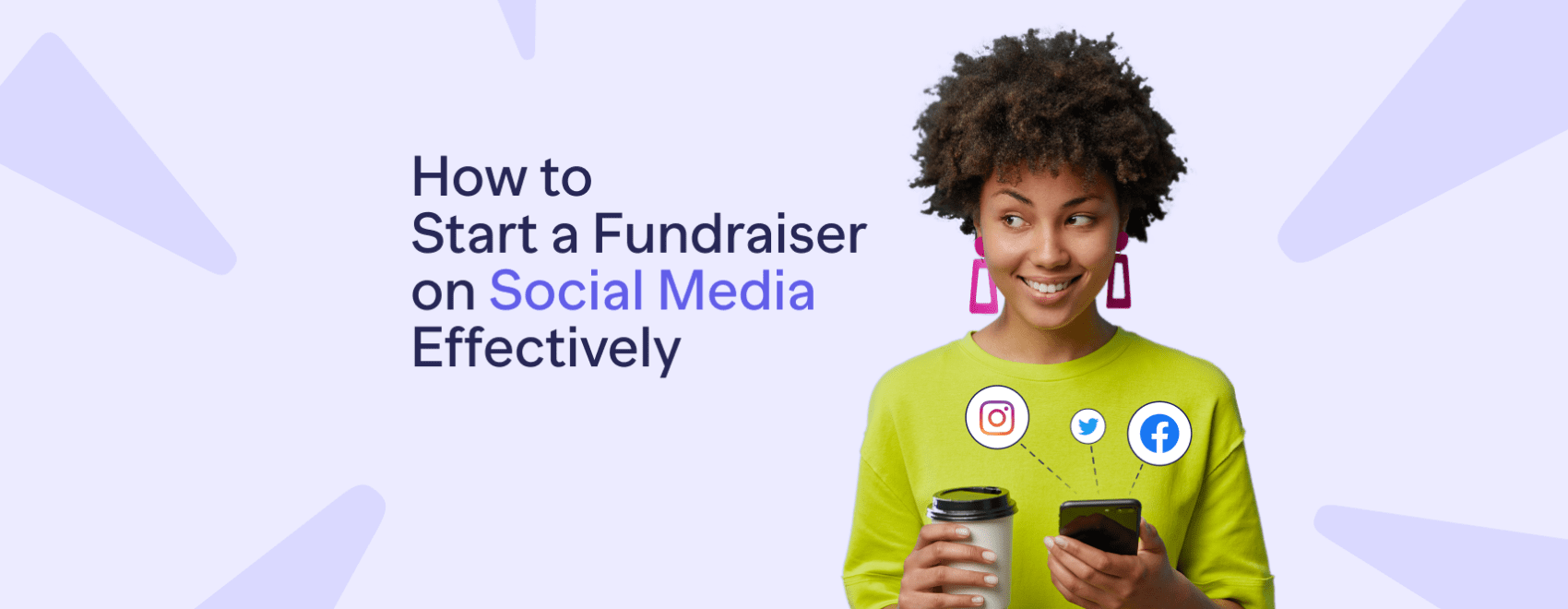If you haven’t considered starting a fundraiser on social media, you’d be in the minority. The beauty of social media is that it offers the ability to exponentially expand your reach, doesn’t pigeonhole you to a specific date or time, and unlocks a network of potential volunteers who are willing to spread the word. Matter of fact, a recent study found that 55% of people that engage with charities take action and nearly 60% of those users donate!
How to Start a Fundraiser on Social Media
Much like with anything, social media fundraising campaigns aren’t born overnight. Which is exactly why we’re here to show you how to start a fundraiser on social media (effectively).
Step 1: Choose Your Platforms Wisely
We’ll be real, there are a lot of social media platforms out there. The good news is you don’t have to use all of them to be successful. Just focus on choosing the best options that will most likely reach your target audience. Here are some things to think about with each platform:

- Instagram – As you probably know, Instagram is very visual. Videos and attractive graphics always do well. If your fundraiser has a lot to show off visually – whether it’s items you’re selling, volunteers working, or the overall cause you’re serving – Instagram is likely the place to be. It’s worth noting that Instagram’s users tend to be younger, with 40% under the age of 22. They even have a live donations feature that makes it easy for users to donate when you go live.
- Facebook – Facebook is the most popular platform out there that pretty much everyone uses! 73% of adults use Facebook every day and 37% of them get their news from Facebook. You can also easily create events or groups and invite people to them on Facebook. It may be worth considering using a hybrid of Facebook and Instagram as they are actually linked!
- LinkedIn – LinkedIn may not be the immediate go-to for fundraisers, but it is uniquely able to connect you with professionals and other organizations that may become partners of your nonprofit.
- Twitter– Three quarters of the Twitter audience is male, with most being between the ages of 25-34. Though you may not be able to tell long stories through Twitter, the character limitation forces nonprofits to create powerful, succinct messaging.
- TikTok – If one thing’s for sure, people can’t get enough of TikTok. Content constantly goes viral on this platform and users spend hours just scrolling. While it could be a viable option, you would just have to be very creative with your approach! Also, the vast majority of TikTok users are under the age of thirty. So, if that’s your audience, it may be a good route to take.
Step 2: Create Shareable Marketing Collateral
Naturally, any fundraiser held primarily on social media needs to come with creative content and visuals to share! Rather than waiting until the event is underway, create what you can ahead of time to be prepared. Here are a few ideas:
- Teasers – Create images that only give a little taste of your upcoming fundraiser, without giving away too many details. These can also be used in your email campaigns. Consider shooting fun little video teaser clips for this that can be used as Reels on Instagram to jumpstart the hype.
- Announcements – During the event, you’ll likely need to provide updates and announcements when you reach certain milestones or get large donations. So it can be helpful to prep the template for these posts ahead of time.
- Action Shots – Any images you have of the actual nonprofit in action will be great for engaging an audience. For example, volunteers handing out food, a new playground being built, kids with Christmas presents. These posts are perfect for tugging at the heartstrings and providing potential donors with an idea of what their money is going to.

Thank You’s – After the fundraiser ends, a thank you collage of all the images from the event is a great way to show appreciation to your donors. Or if you can get video footage throughout the entire process, make a simple video slideshow with music.
Remember to Be Consistent
It’s important to keep in mind that when you’re creating marketing collateral for your fundraiser to stay on brand and keep everything cohesive. This means using the same colors, typography, and logos in everything that you do. Programs like Canva provide a free way to create images that can be used in various marketing channels.
BONUS TIP: Consider creating a specific hashtag for your fundraiser! Come up with a few creative options and check your preferred social media platform to see if it’s ever been used before.
Step 3: Prep Your Network
When learning how to start a fundraiser on social media, you have to keep in mind that you’re not alone in this! Prior to launching your campaign, it’s essential that you do some promotional marketing directly to your current network of volunteers, friends, and family. They’ll need the heads up ahead of time to know that it’s happening and that you need their support.
You know all that marketing collateral you just created? Give them a sneak peek of it in a mass email asking for their help to share! If you end up using an online fundraising platform like RallyUp too, you can also send them the direct link to your digital fundraiser to share — no matter what kind of campaign it is.
Step 4: Partner Up When You Can
While you’re busy prepping your network, also use it as an opportunity to pitch partnerships with local businesses. If you don’t have any in your network, check your Facebook friends or friends of friends that may have a connection.
Not only does partnering with a business expand your reach to their followers, but it also gives you another source filled with connections.
Before you disregard this as an option, remember, it feels good to give. Asking a company to simply share your fundraiser allows them to give back without a lot of work on their part.

Ask About Donation Matching
Find a business that’s extra interested in your cause? Pitch them on donation matching! It’s simple, for every donation made, they make the same donation. So, if you raise $4000, they would donate $4000.
If this is too big of a commitment, you could ask them to do a donation match for a specific period of time. This also provides a great incentive for people to give as it doubles their donation. A win-win in our book!
Step 5: Set Up Incremental Goals
Incremental goals are essentially miniature goals, or benchmarks, leading up to the ultimate goal. So, say your ultimate goal is to raise $100,000 for your nonprofit. An incremental goal would be setting goals at $5000, $15,000, $50,000, and so on. This helps the bigger goal feel more attainable.
If you add something tangible to the smaller goals, it can also show people that they are doing something good no matter the amount raised. For example, if your nonprofit is a homeless shelter and the $100,000 is going to the building’s expansion, the smaller goals can also be attributed to something – if you hit $5000, that’s 500 meals, $10,000 means new beds, etc.
This is also a great opportunity to use a fundraising thermometer. A fundraising thermometer visually tracks the donations during your fundraiser so donors, volunteers, and anyone else can see your advancement to your goal in real time. Seems amazing but it’s likely not in your budget, you’re thinking?
Good news, RallyUp offers this feature for free! Not only do we track the funds that come in to make it easier for you, but they also make it visual so other potential donors may be enticed to give.
Step 6: Be Ready to Engage
Just because your fundraiser is taking place through social media, rather than in-person, doesn’t mean you should be any less…well… social. Fundraisers, especially for nonprofits, are personal – you have to resonate with someone on a deeper level to entice them to donate their hard-earned money to your cause.
Some great ways to engage your audience are:
- Respond to every comment, like, or share. Say thank you and tag them. Not only is this a great way to engage them and show your appreciation, but it also continues to expand your reach. In fact, Facebook prioritizes posts that have “meaningful engagement.”
- Give frequent updates. Show that your organization is there and active by scheduling multiple posts out with tools like Hootsuite. You can even consider doing live streaming periodically! This gives you an opportunity to show what’s going on behind the scenes and make people feel more involved.
- Learn about timing. Some social media platforms include timing in their algorithm. LinkedIn, for example, prioritizes your post if you’re engaging with people within the first 60 minutes of posting. Additionally, the best times to post should also be taken into account. A recent study found that engagement rates on Thursday and Friday through Facebook are 18% higher than any other day.
Step 7: Lean on a Fundraising Platform Made with Social Media in Mind
When you’re figuring out the ins and outs of how to start a fundraiser on social media, you definitely want to streamline your efforts as much as possible. It can be a huge lift! Yes, you can create fundraisers on social media networks like Facebook or Instagram directly, but they’re limited in their capabilities.
When you use an online fundraising platform like RallyUp, you have a lot more flexibility with what you can do and fundraisers are made to be easily shared on social media! No matter which networks you choose.
When we say easy, we mean it. We’ll walk you through an easy step-by-step process, all while customizing the campaign the way you want it – we’re talking your logo, colors, branding, and layout. Remember that fundraising thermometer we mentioned earlier? You can include that on your page for free!
When you’re thinking about how to start a fundraiser on social media, the answer is RallyUp.
